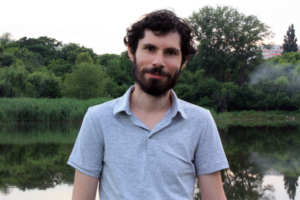November 26, 2018
By Ionuț Cioană
The Museum of Cold Art
Starting with October 9th 2018, Erwin Kessler is no longer just the harsh critic at Revista 22, known for his linguistic wit but also for his taste for controversy and scandal. His CV is no longer limited to being the one who merged the names of Alexandra Pirici and Manuel Pelmuș, presenting them to the local scene, in writing, as P – P which, when read aloud, acutely highlights his attitude towards the performative arts and contemporary art in general. (Pipi in Romanian = Piss in English)
(It’s no surprise that in this case, for the grand opening of The Museum of Recent Art – MARe, various artists associated with The National Center of Dance in Bucharest refused to participate)
With the inauguration of The Museum of Recent Art in the Primăverii district of Bucharest, Erwin Kessler is now a museum director as well. And how much of his public persona can be found in the formula of this new art institution remains to be seen.
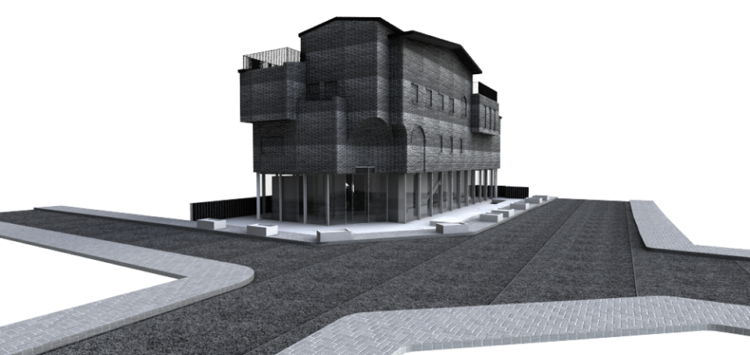
Image of the architectural project, taken from the museum’s Facebook page.
The demolished house as a founding moment
An article from Art Newspaper, a British publication, states:
A new private museum in Bucharest reveals the history of Romanian art under the Communist regime of Nicolae Ceausescu and after the 1989 revolution. The Muzeul de Arta Recenta (MARe) opened on 9 October in the city’s Primaverii district, once reserved for the upper echelons of the Communist party. The 1,200 sq. m, five-floor building in dark brick was designed by the Lebanese architect Youssef Tohme as a “ghostly silhouette” of the original villa on the site, the home of Ana Pauker, the Romanian foreign minister described by Time magazine in 1948 as “the most powerful woman alive”. A short walk away is the former mansion of Ceausescu himself, which opened as a visitor attraction in 2016.
These statements suggest that the building where Ana Pauker lived was demolished, and a new building, acting as an architectural re-interpretation of the original, was erected in its place. Bucharest is all too familiar with such scenarios. Town Hall is indifferent to the concept of architectural heritage, even though there is legislation to back it up. Owners often leave their houses in disrepair, then sell the property as an empty lot, when the buildings turn to ruin.
Sometimes, fragments of the original building are salvaged and used in a new configuration.
However, the problem with MARe’s location on such a site brings up other issues, which are connected to the handling that part of heritage associated with Romania’s socialist era. From this perspective, tearing down the house and rebuilding it as a “phantom” has something to do with attempting to overcome a historical era via a symbolic gesture at an architectural level – by transforming a landmark into a simulacrum.
This type of attitude might tickle the fancy of postmodern architecture aficionados, or of those interested in the reinterpretation of built heritage by playing with historical, material form. At the same time, this attitude can be truly upsetting for those architects or scholars who understand heritage through a more dogmatic lens, which implies the protection of the material integrity of the historical object.
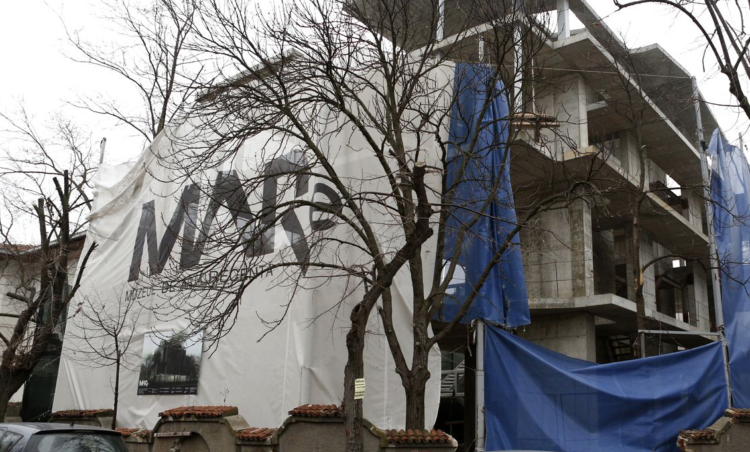
The museum after the demolition of Ana Pauker’s house. Image from Cancan.
From an ideological perspective, heritage appears to be a preoccupation of the right wing.
To this end, Boris Buden, a known left wing intellectual, wrote an article within the Performing the Curatorial publication, where he deplores the fact that the heritage movement has been slowly turning into a national policy in France since the ’80s, also marking the renunciation to the revolutionary ideal.
[Pierre Nora] talks about the age of passionate, almost fetishistic memorialism. This, as he writes, was first diagnosed in France in the 1979s, when the country that proudly laid claim to its revolutionary past ceased to identify with the Great Revolution of 1789 and discovered a new interest in its pre-revolutionary past. It was at this time when, in Penser la Revolution francaise (1978), François Furet wrote the infamous sentence: “The French Revolution is over.”
One of the main features of this “age of commemoration,” as Nora calls it, was a growing attachment to “heritage” (or patrimoine in French). In 1980, Valery Giscard d’Estaing, then president of the French Republic, proposed to dedicate himself to his country’s national heritage.
According to Nora, this “meteoric rise of the cult of national heritage” is also an effect of the disappearance of historical time previously oriented by the revolutionary idea.
This point of view was also appropriated by the local Romanian left who view, according to the above statements, the idea of heritage as profoundly reactionary. On the other hand, the same left wing laments the irreparable disappearance of monumental mural art from the facades of socialist Romania’s industrial buildings, a kind of art which is, by all means, of obvious artistic and historical value.
In the most general sense, the left wing is just as attached to socialist modernism, as architectural heritage.
The problem with this ambivalent attitude towards heritage is linked to the fact that, no matter how strong the forces of global capitalism, nowadays people live inside multiple local modernities where Western notions cannot be understood correctly unless translated into the local cultural dialect.
From this perspective, it is interesting to see that, during a recent public discussion at the Tranzit exhibition space in Bucharest, a Czech guest noted that art as a commodity is a Western idea not suitable in the East. He argued that without a proper art market, the work of art functioned outside the notion of commodity within Eastern Europe, until the 1990. I am using this example here in order to demonstrate how very general notions (heritage, commodity, etc.) acquire different meanings in different cultural spaces, depending on the context.
Even the idea of a Museum of Recent Art indicates towards this kind of reading, but I will elaborate more on that later.
To conclude with the topic of architectural heritage, in my opinion built space is a common good, irrespective of one’s ideological convictions. Its symbolic dimension and historical significance are hard to deny. And it comes as no surprise that modern Europe finds one of its founding moments when it starts to approach methodically the study and the protection of ruins.
With this in mind, tearing down Ana Pauker’s house is a rather dubious symbolic gesture. In Primăverii district, this type of gesture seems useless insofar as its logical consequences would mean the need to destroy all heritage built by the former nomenclature.
Furthermore, it appears that the house Octav Doicescu built in 1939 was demolished illegally, according to a document that the First Sector’s City Hall sent to the press.
We mention that any intervention on the building is possible only with the approval of The Ministry of Culture. The document released by our institution states that this notice is available only for issuing the construction authorisation and does not give the right to execute construction. (Mass-Media relations)
Regardless of the source, which is a tabloid publication, this kind of scenario is entirely plausible in the Bucharest real estate landscape.
Inasmuch as destruction can only be orchestrated within the limits of private property, the museum shows proof of its symbolic powerlessness – which is that, in view of the larger context where it operates, it is unable to own up to the naive anti-communist sentiment that appears to dominate it. In my opinion, the symbolic operation that began with the building hosting MARe demonstrates an acute lack of respect for the reality of a country’s past, regardless of the connotations that accompany it.
Moreover, if we were to look at the buildings hosting the Museum of Recent Art and the Museum of Contemporary Art in Bucharest, one can observe a symbolic subordination of MARe in respect to MNAC. Each museum chose a building associated with a former communist leader. MNAC is tied to Nicolae Ceaușescu and MARe to Ana Pauker. And if MNAC succeeded to colonise the political centre of power, MARe only managed to take up some private residence.
I am slowly starting to understand Dan Perjovschi’s reluctance when it came to contemporary art entering the palaces of the former or current political power.
The fact that this is now becoming a formula is hilarious, but also alarming. It would appear that the country’s National Railway Company has a much healthier attitude towards the historical past. Out of interest for the history of Romanian technology, the Romanian Railway Company preserved Ana Pauker’s armoured car. The Skoda automobile was discretely parked on a piece of railway in Sinaia station. In its heyday, the automobile was fitted to run on tracks, like a small private train.
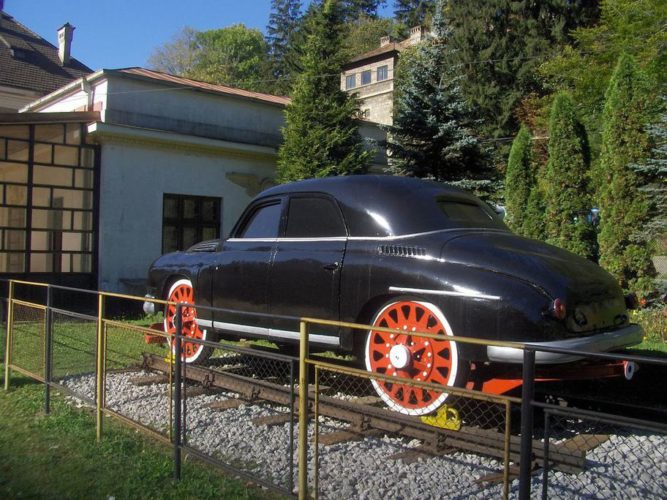
Image taken from the webpage of ProMotor.
In the case of Ana Pauker’s car, it’s important to highlight the fact that we are dealing with a proper handling of a museum artefact that is important for the inventory of local technological history. In the case of MARe, we are dealing with the act of destroying a cultural landmark, signalling a certain inadequacy, which we will be able to observe at other levels, when looking at this new museum.
The museum building as an exhibition space
Art exhibitions follow a precise set of rules. After 1960, these rules consolidated as the space of the white cube and its wide use as an exhibition space. There is also an important book which systematically describes these basic rules. It was written by Brian O’Doherty and it is called Inside the White Cube / The Ideology of the Gallery Space.
An e-flux article contains a paragraph that can help us better understand the exhibition space at MARe:
In many ways, O’Doherty’s point is as simple as it is radical: the gallery space is not a neutral container, but a historical construct. Furthermore, it is an aesthetic object in and of itself. The ideal form of the white cube that modernism developed for the gallery space is inseparable from the artworks exhibited inside it. Indeed, the white cube not only conditions, but also overpowers the artworks themselves in its shift from placing content within a context to making the context itself the content.
However, this emergence of context is enabled primarily through its attempted disappearance. The white cube is conceived as a place free of context, where time and social space are thought to be excluded from the experience of artworks. It is only through the apparent neutrality of appearing outside of daily life and politics that the works within the white cube can appear to be self-contained—only by being freed from historical time can they attain their aura of timelessness.
In short, even though it is not a neutral space, the white cube tends to disappear from view almost completely, operating a strong erasure of daily time. Thus, the exhibition space aims to launch us, with one giant leap, into eternity.
Enter the white cube, with its even walls and its unobtrusive artificial lighting—a sacred space that (despite its modern design) resembles an ancient tomb, undisturbed by time and containing infinite riches. O’Doherty uses this analogy of the tomb and the treasury to illuminate how the white cube was constructed in order to give the artworks a timeless quality (and thus, lasting value) in both an economic and a political sense.
O’Doherty’s ideas are already 42 years old, dating back from 1976, when they were first published in Artforum. Nevertheless, this dominating set of rules noted by the author are still relevant. Naturally, no one expects MARe to classically approach these rules. Yet their main coordinates should still be present in some shape or form. However, they don’t seem to be.
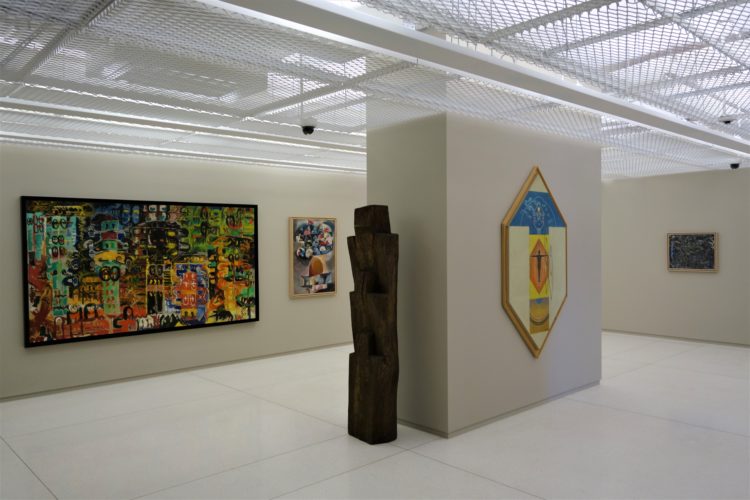
Image from Revista 22.
The first thing that is troubling, raises a lot of questions and hampers the viewer is the height of the ceiling. Truth be told, the museum’s ceiling is very low. After an unfortunate architectural decision, the ceiling was lowered by approximately 1 meter by using transparent iron railing, transforming the exhibition spaces into cramped, slightly claustrophobic rooms, where the works seem somewhat crowded.
Another unfortunate curatorial decision led to exhibiting works along the narrow corridors of the building. Below is one such corridor from the 1st floor. The photographer attempted to cover up this embarrassing situation by cropping out the right side wall, which in reality is only one meter across from the art works.
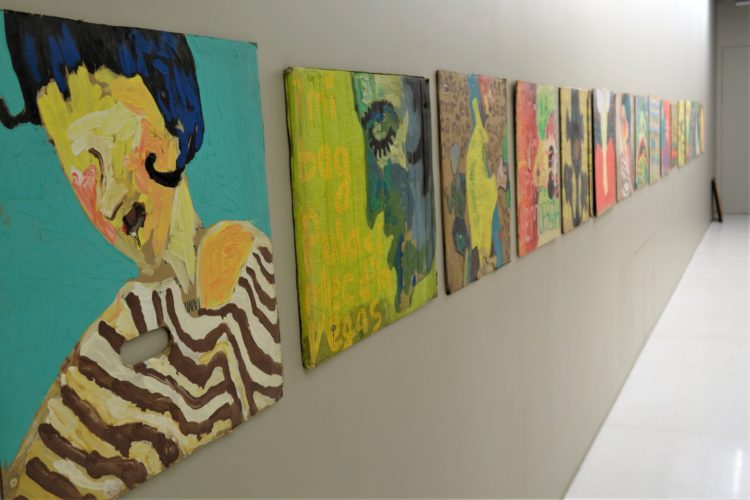
Image from Revista 22.
This leads to all sorts of hilarious situations where works by either Nicolae Comănescu or Sorin Dumitrescu are facing a glass fire hidrant panel.
In this sense, the setup discordantly follows the utilitarian marks of the building, light years away from the idea of a space that erases itself and disappears from view. And if we take another look at the e-flux article, we can move quickly forwards:
[The White Cube, n.n] was a space for the immortality of a certain class or caste’s cultural values, as well as a staging ground for objects of sound economic investment for possible buyers.
And it’s true, the inadequacy of the classical white cube rhetoric in the case of the Museum of Recent Art does indeed hint at a certain social class. The use of narrow corridors and the ridiculously low ceiling, as well as the questionable taste according to which each floor was painted in a different colour, without the result being too aesthetically convincing even if the material resources and the space allowed it – all these facts suggest a connection to something that usually goes by the name of the new rich, or as they say in French, les nouveaux riches.
From a historical and social point of view, these were the members of a social class whose characteristics included unbecoming behaviour, lack of taste in terms of home decorations, clothing, language and culture, upon which the French aristocracy looked down with a sort of superiority that is completely questionable itself these days.
What is left today from those behaviours is a certain inadequacy based on someone’s attempt to present themselves socially as something they are not (yet). In this case, the ambitions connected to the public display of the privileged social status of the new Romanian rich have generated a type of architecture (the enormous houses from Pipera, in Bucharest, for example), they generated a social behaviour (the restaurants and terraces on the North side of lake Herăstrău), but they also generated the more specific public behaviour of displaying wealth, connected with an exaggerated and generalised veneration of the luxury automobile. And it is now time for high culture to become part of this inventory of material culture under the guise of the private art museum.
What gives it away as being part of this inventory is the informal and unprofessional aspect of the exhibition spaces. They’re more akin to intimate spaces belonging to a private person who decorated them according to white cube standards, but only as much as the architecture allowed. And I firmly believe that if the museum’s director were bolder, and had included in an open and obvious manner the social mechanisms behind the museum as an institution, he could have turned the private aspect of the museum and its exhibition spaces into the museum’s strongest feature. He could have then generated that context that would have made the exhibited works more powerful.
Related to all the above, in an article in Revista 22 to which I suspect Erwin Kessler also contributed, says:
The inside of the building contradicts the expectations and preconceptions that visitors might have when they think of a museum. Instead of neutral white cube space, the building contains a labyrinth of corridors and rooms, clearings and alcoves, thus encouraging and increasing the level of intimacy between the visitors and the works of art.
The problem is that this refusal of ordinary conventions did not turn out well.
MARe does not manage to distance itself too much from the aesthetics of the modernist white cube. The majority of its spaces can be seen as attempts at creating perfect, immaculate rooms that fill the inside of a (post) modern building.
Thus, MARe doesn’t fully break away from the conventions of contemporary art, nor does it create a spacial category that is truly intimate. The result is a failed attempt at refusing a model that the museum seems to be incapable of implementing in the first place, from an architectural and logistical perspective. On the other hand, the final result marks the incapacity of the museum to offer a different type of experience of an exhibition space.
It is a double inadequacy: one against the conventions of contemporary art, the other against its own aims, presented on the level of discourse.
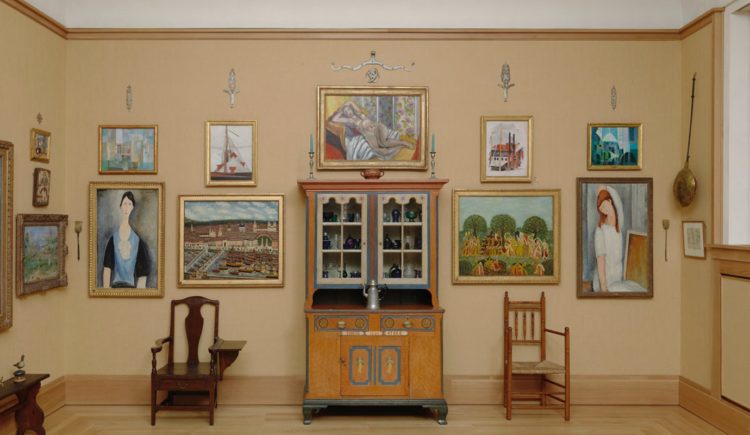
Image from Barnes Foundation.
Beyond the spacial experiment that MARe could not carry out successfully, by producing a functional and personal exhibition modality, the history of art does contain some remarkable ways to exhibit modern art that have no connection to the white cube.
A good example would be The Barnes Foundation Art Collection in the United States. Albert Barnes, the collection’s founder, was an American chemist who became rich after he invented a new medicine.
With the money he earned, he built the world’s most impressive private collection of Impressionist and Post-Impressionist art. It was exhibited in his private home. The set-up was thought as a school with limited access, not based on social class, but based on the idea that art must be contemplated in silence, far away from the crowd, by a small audience who get private access, one by one.
His project of a private art collection open to the public is imbued with financial and cultural elitism. But to this day it stands as an important hallmark for the open negotiation between public access and property, while also offering interesting curatorial solutions which rethink personal space as a place for aesthetic contemplation.
Even if it created a novel mode of presentation, the collection was not spared from a tumultuous destiny.
As the film The Art of the Steal shows, after the owner’s death, the collection was appropriated via shady manoeuvres by the Pennsylvania City Hall, for the simple fact that it was worth 25 billion dollars. The unique formula with direct, intimate and personal access to works of art was replaced by the mall-museum, the world’s most widespread model.
Returning to the e-flux article one last time, to reach a final conclusion, one could say that:
The spatial arrangement overdetermines—consumes—the works (or, if you will, statements placed within them) to the degree that context becomes content.
This holds true for MARe. The inadequacy of the exhibition space when it comes to art’s basic rules places it somewhere between a private space and a white cube, without this leading to an exhibition solution that would be singular or convincing. The fact that some works are not functioning (Sebastian Moldovan’s installation), that some are not present in the exhibition space (Cristina David’s video) and that others are placed in completely inappropriate places (Pavel Ilie’s extremely valuable work sits under a flight of stairs) all these only add to the observations made above.
This could be seen as a case of amateurism if everything we’ve observed so far wouldn’t have come together out of a global working method that is coherent enough and has a logic of its own. Erwin Kessler attempts to articulate in the introductory text of the publication accompanying the permanent collection. The problem is that the global notion of recent art proposed in that text is more convincing on paper than when faced with the actual exhibition.
As a consequence, according to the usual mechanism of exhibition spaces highlighted above, the context becomes content. In this case, it produces a negative pressure which strongly exerts itself onto the art works. This is why I made the rather tasteless joke in the article’s title, as an attempt to demonstrate that the museum has to respect a standard of quality, which should not be expected only of the exhibits themselves. Otherwise, the art within it gets colder, it gets compressed, becoming smaller, literally.
A simple solution to avoid such a situation would have been for the museum to show less works, to contextualize them within the exhibition space, and to give a more comprehensive explanation, from a historical perspective.
The museum’s art collection
The permanent collection holds very valuable works. I have already mentioned a work by Pavel Ilie, Object, made out of adobe on a wire and reinforced concrete structure. Then there’s Ion Grigorescu’s Cadaver shoved by bulldozers. And also the series by Nicolae Comănescu from the image above, the one with the corridor, which is very important for the history of Romanian art after 1989. Then there is a painting by Tudor Graur, Composition / Meat, 1985, which is a rare chance to see the artist as a painter. Roman Cotoșman’s two Untitled 1987 pieces are also noteworthy.
In my opinion, the most remarkable piece of the entire collection is a large painting by Diet Sayler, Buildings for Tomorrow, 1969. It could easily be confused with a painting by Ion Bitzan from the time when he was influenced by Rauschenberg. It is a constructivist geometric composition in which fragments of photo-realistic paintings are inserted. If look at it in the context of Diet Sayler’s later works, this painting is a surprise and a delight. It suggests that Romanian modernism, partially preserved in the canon of local Socialist Realism, could naturally connect to the evolution of American painting after the 1950s, when the opportunity arose.

Diet Sayler, Buildings for Tomorrow / 1969 / oil on canvas.
The lack of contextualisation of the works
Beyond the works listed above, a discussion about the coherence of the permanent collection is necessary. This discussion raises issues of selection and curatorial work, which are visible in the presentation format.
Leaving aside the strengths of the collection, the rest of the works seem to be chosen according to representative names in recent art history. But that does not save the entire acquisition, thus achieving a quality ratio of 40% of significant works per 60% of works of lesser importance in the given context, or of lesser artistic quality.
What is more important, the presentation lacks a coherent vision as to what the person in charge of selecting the pieces in the collection and setting up the exhibition actually wanted to say about Romanian art after 1960, a vision that should be directly evident when coming into contact with the exhibition itself. As I have already said, this vision is much more aptly articulated in the introductory text of the catalog. But it can not be found in the exhibition space.
Without the text, the exhibition is simply read as a series of works without any apparent coherence.
Then, at a curatorial level, the relationship between the works in the exhibition, but also the relation between the works and the space, are completely absent. The permanent collection gives off a ’70s or ’80s Union of Artists art show impression, an exhibition where all of the day’s most important art figures are presented, piled up, without any division according to different media / directions / practices.
It is a collection of representative samples that are often lost among the lesser works. And only a specialist can figure out what works are valuable, but they can not relish them because of the context, or better yet, because of the presentation.
And speaking of context, this is not formulated in any way when it comes to a scientific or historical explanation, not even in the form of printed text that should accompany each floor. For artists like Ștefan Bertalan, placing his works directly on the wall without saying anything about them is equivalent to canceling them out. It means not paying proper attention to an artist that can not be understood only by the traces in his drawings, because he was both interested in observing but also in building a very personal world.
Regarding the permanent collection, it is regrettable that the catalog’s introductory text is not visibly embodied within the exhibition space.
This text contains a number of interesting observations that deserve to be discussed.
But in the absence of their consistent articulation at an exhibition level, they remain just words inside a catalogue, which is a pity. For example, I am thinking of Erwin Kessler’s remark on the stylistic diversity adopted at an official level after 1965, paving the way for a number of important trends in art at that time. I am also thinking of his observation of the dominant status of artists who did not have formal training within the ranks of the local neo-avantgarde.
Both require extensive explanations within the context of the exhibition via curatorial work, that is using other means rather than the mere presence of works, which, in the absence of a general interpretation which is accessible, are understood by each viewer to the best of their abilities.
In addition to the collection showcase, there are two other exhibitions in the museum. But it is difficult to distinguish which is which. Jeff Wall’s exhibition occupies intermediate spaces between floors. Because of this, as a visitor, you might not really understand that this is a separate exhibition from the permanent collection. And there is also the Heaven out of Hell exhibition which, due to the space arrangement, can also be easily confused with the other two.
So what MARe offers at this moment are three exhibitions which the spaces mangle together, that is, unless you are extraordinarily scrupulous and pedantic, and you are actually doing your best to follow the rather cryptic indications on each floor, marking which room is allocated to which of the three simultaneous exhibitions.
The museum is divided into mezzanines 0.5 / 1.5 / 2.5, dedicated to Jeff Wall.
Then there are levels 1 and 2 dedicated to the Permanent Collection.
Levels -1 and 3 are occupied by the Heaven Out of Hell exhibition.
In conclusion, it looks like we have a seven-story building, when in fact it’s just a series of fragmented spaces, set around the serpentine staircase that organises the entire building.
Fabrications
The Museum of Recent Art does not seem particularly interested in putting the effort to explain local art history using the didactic tools of the art exhibition. However, Erwin Kessler is making some extremely risky moves, seemingly fabricating new artistic periods for some of the big names of the local and international scene.
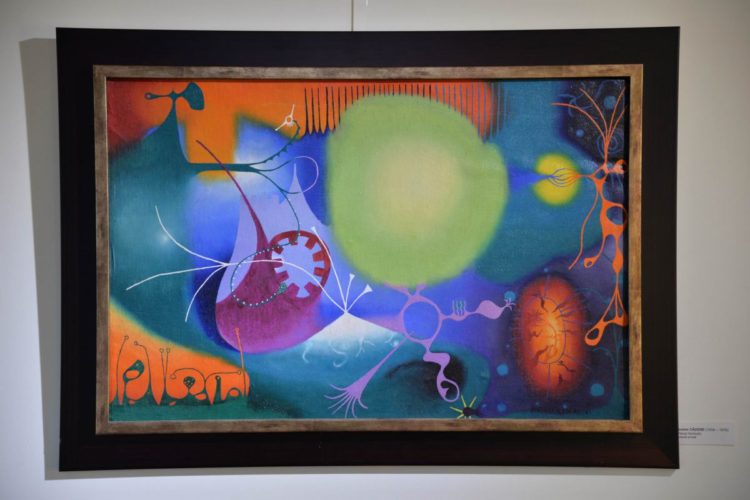
Photo from Modernism.ro.
To this end, a previously unseen work, presented as belonging to Andrei Cădere, is quite striking. It is a surrealistic-psychedelic painting of a doubtful aesthetic aspect, verging on kitsch. It is very similar to the above picture, found in the Pavel Şuşară Museum.
The problem with such paintings is that they require proof of authenticity.
And this is done with research and documentation. Even though these paintings allegedly belong to the said artist, at this moment we have no guarantee that this is actually true.
As far as I know so far, there is but one colour photograph taken by the seaside, in which Andrei Cădere poses on the beach, holding in his hand an abstract painting made on a wooden or cardboard panel. The nature of the work is very different from what we see above, that is to say, it is a much more ordered composition, and the geometric shapes are less soft. It’s different.
In the absence of a public documentation, this type of work included in the display can discredit the curator, who seems to have fabricated some chapters from the artists’ production in order to be able to sell them. The fact that Andrei Cădere, who is well known internationally for his artistic work related to performance art and post-minimalism, turns out to be the author of such paintings is a huge red flag.
Recent Art as a notion, but also as a lack of respect
MARe is not the only private museum of art in Bucharest. There is also the Pavel Șușară Museum of Modern and Contemporary art, mentioned earlier. Both entities attempt to redefine the current notion for visual art, which is the notion of contemporary art.
For MARe, this attempt appears to be linked to the idea of stepping outside of art history by borrowing a notion from historical discipline, in the most general sense. To this end, just as we speak of recent history, we might as well talk about recent art. At this level, there appears to be no polemic intention or conflict with the notion of contemporary art. The Art Newspaper reports:
Kessler describes the museum as a corrective to the “mystification” caused by Western institutions seeking to boost their holdings of Modern and contemporary art from Eastern Europe, which have “radically favoured Romanian artists who simply copied Western idioms… [and] were always marginal here”. He says that MARe offers an insider’s view of a largely “regressive” culture and that it plays a “pioneering” role in the Romanian museums landscape, since state institutions have neglected post-war art.
According to the above, it seems as Erwin Kessler attempts to make a historic reparation for recent art, in the direction implied above. Moreover, we can observe an evident interest for late modernism in Romania, but also a polemic distancing from artists who are seen as mere copycats of Western art.
The problem is that Romanian art after 1960 actually has way less epigones in the sense highlighted by Kessler. One could even say that during 1969-1990 there were no artists who simply copied Western visual idioms. Local artistic formulas are extremely idiosyncratic, bizarre and different from canonic Western art, even though there are numerous resemblances and overlays.
Moreover, it appears that Erwin Kessler is not acting according to his interest for a specific period, but is rather the unconscious prisoner of his personal art preferences in general.
The inaugural collection display of more than 120 works, titled Stylistic Diversity Ltd, emphasises artists who worked outside the state structures, ranging from the satirical Pop collages of the self-taught, homeless Ion Bârlădeanu to the spiritual paintings of the neo-Orthodox Prolog group. The late Geta Brătescu, who worked for more than six decades in Bucharest and recently gained international recognition, is a conspicuous absence. Kessler says Brătescu is not represented in the collection because of her historic affiliation with the Communist regime; she was a member of the official Union of Fine Artists and exhibited in the Romanian pavilion at the 1960 Venice Biennale (57 years before her solo participation last year).
As for Geta Brătescu, it is funny to remember that the museum owner did in fact attempt to acquire some of her works, but was not successful. Then, the line Erwin Kessler drew between Brătescu and other artists from the 1960-1980 period is a mere illusion, since many of the artists in the museum’s permanent collection were also part of the Artists’ Union.
Geta Brătescu’s affiliation to the communist regime is not just a blatant exaggeration, but it is also a petty remark. It is connected to the curator’s initial opinion about the artist that he published a few years back in 22 Magazine. Comparing her to Ion Grigorescu, with which she had a joint art show at MNAC in 2007, Erwin Kessler considered Geta Brătescu an insignificant artist. This gave Kessler the audacity of nick-naming the artist as Dada Barbie.
It is regrettable that the Art Newspaper article was published right after Brătescu’s death, in September 2018. The curator did not show the minimum decency of leaving her name out of his discourse, thus taking advantage of an unfortunate event to propel his own agenda.
Then, if we were to take the notion of recent art seriously, we should take into consideration S. N. Eisenstadt’s theory on Multiple Modernities. This theory suggests that, at a global level, there is a modern history that encompasses a multiplicity of parallel cultural programs. In this sense, modernity and Westernisation are not one and the same. In conclusion, the Western models of modernity are not the only legitimate ones, even though they represent a reference point for others.
Following this logic, Kessler is trying to bring to our attention the local idiom of modernity and show that there are significant differences when it comes to notions, directions and interests in Romanian art. This also serves as a good explanation for why recent Romanian art looks so different from the Western model, being hard to understand completely using outside references alone. In Kessler’s view, as far as media are concerned, Romanian post-war art is more about painting, and also about the elevated amateurism of artists activating outside of The Artists Union. Then, as far as the Neo-Avantgarde is concerned, we are dealing with an experimental art that is gradually retreating into the most conservative area of local culture, which is the Orthodox religion.
The problem is that Erwin Kessler loses himself along the way, somewhere between his own personal preferences, the apparent distortion of empiric truth (presenting novel paintings with no documentation belonging to artists renowned for performance art), a sort of tragic Orientalism (the country’s troubled past, etc.) and a series of visible gestures of contempt for some of the artists belonging to the very era he wants to rehabilitate.
All of these above have the potential to discredit his endeavours within his professional community.
An important aspect is the fact that this discourse on Western modernity, as opposed to Romanian modernity, is strongly distorted by nationalist discourse. To this end, it comes as no surprise that the museum shop sells a mouse pad designed by artist Marian Zidaru, on which he drew the shape of Romania’s map around the museum’s logo. And if it weren’t obvious enough, the work is titled România Mare, The Greater Romania – which refers to the borders of the Kingdom of Romania in the interwar period, a term which, in time, has become a favourite of local ultra-nationalists. Marian Zidaru proposes it as a joke, an ironic gesture. But if you take into consideration that 2018 marked, on the public arena, the strong symbolic bond between Christianity, the traditional family, nationalism and intolerance, then hinting at Vadim Tudor’s former political party is not really funny.
When it degenerates into symbolic of physical violence, nationalism is not even patriotic any longer. This is aptly illustrated by the entire public life of Vadim Tudor, whose post-mortem resonance MARe should clearly avoid.
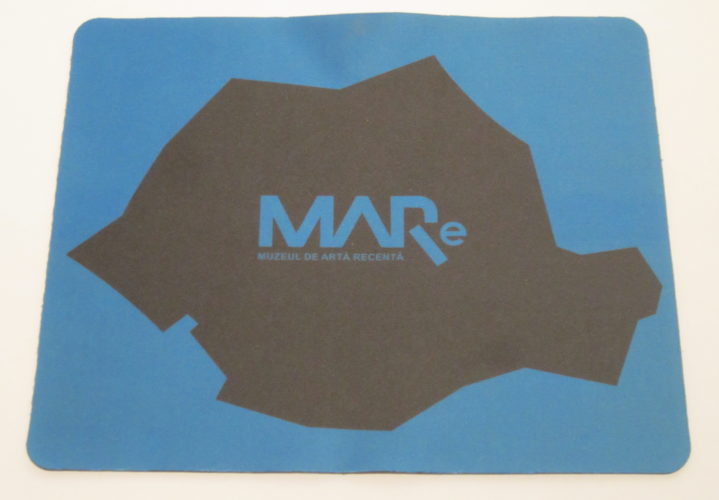
Marian Zidaru, România MARe Mousepad / 2018
In this rather ambiguous context, making a reference to the Romanian Centenary and the history behind the 1918 Union, which has nothing to do with the exhibited works, nor the historical era the museum is interested in, seems slightly out of place. An article from 22 Magazine reads:
The decision to inaugurate the museum this year has a special significance. In 2018, Romania celebrates 100 years of union of Transylvania, Banat, Bucovina and Basarabia with The Old Romanian Kingdom, giving birth to modern Romania.
Amusingly enough, this anti-Western, anti-modern, somewhat tribal attitude of the ultra-conservative local intellectuals is also demonstrated by the Pavel Șușară Museum of Modern and Contemporary Art. This endeavour is based on recovering the late modernity of Romanian art in a sort of open conflict with contemporary art.
From min 4:00 in this video you can listen to Pavel Șușară’s opinions on contemporary art and artists, whom he views as the pinnacle of superficiality or, better yet, of stupidity.
In their respective ways, both museum initiatives seem to share the same ultra-conservative ideological, political and cultural position. The aggressive nationalism and the questionable view on contemporary art indicates a series of professional inadequacies.
On the other hand, an enormous ambition to modify the categories of art history, as well as Romania’s place in current visual narratives is present. Generally speaking, some of the latter concerns express legitimate ambitions connected with current developments in the art history of the region. However, it seems doubtful that Erwin Kessler or Pavel Șușară have a real interest to systematically follow through with more than a superficial discourse, without much regard for the outstanding theoretical difficulties that the 1945-2018 period of Romanian art raises, from the perspective of art history.
MARe’s place on the local scene
At an exhibition level, MARe does not have the intellectual coherence needed to rival MNAC or other independent centres for contemporary art in Bucharest, working with young curators.
It will probably be a space to produce glossy art shows, as well as media and social spectacles. This will attract the kind of audience that the museum already openly targets, which is youngsters who don’t know much about visual art. At the same time, the museum will also draw in local art specialists who are interested in enjoying mixed tastes and have affinity for scandal.
The merit of this museum is that it will periodically bring to Bucharest some of the stars of the international art scene, as it did with Jeff Wall. Regardless of the exhibition, which was deplorable due to the display, Jeff Wall’s presentation at the Central University Library gathered a large audience of specialists. The artist, with a long experience of public presentations for his works, prompted an interesting discussion about his practice as a photographer.
Two ethical dilemmas
The museum contains a work of mine. With this in mind, some might say that I’m speaking from an incorrect position. I took the collector’s money and now I’m criticising his institution. For the time being, all I’m going to say is that I will keep the details of the acquisition to myself, which is both to my advantage, as well as of the buyer.
I consider this to be a sign of good faith.
Others say that I am writing to get revenge. All it takes to dispel this is a reading of my other articles on other platforms, in order to see that the way I approach the issue is not new nor different from my journalistic work so far.
From my perspective, this article is my personal opinion, and it is my right to express it publicly.
And since we’re on this subject, there is another problem that I would like to point out, which concerns the exhibition’s curator. I think it was wrong to include his wife’s works in the permanent collection.
POSTED BY
Ionuț Cioană
In 2006 Ionuț Cioană started to work as a visual artist, developing a series of projects under the alias Mircea Nicolae....



